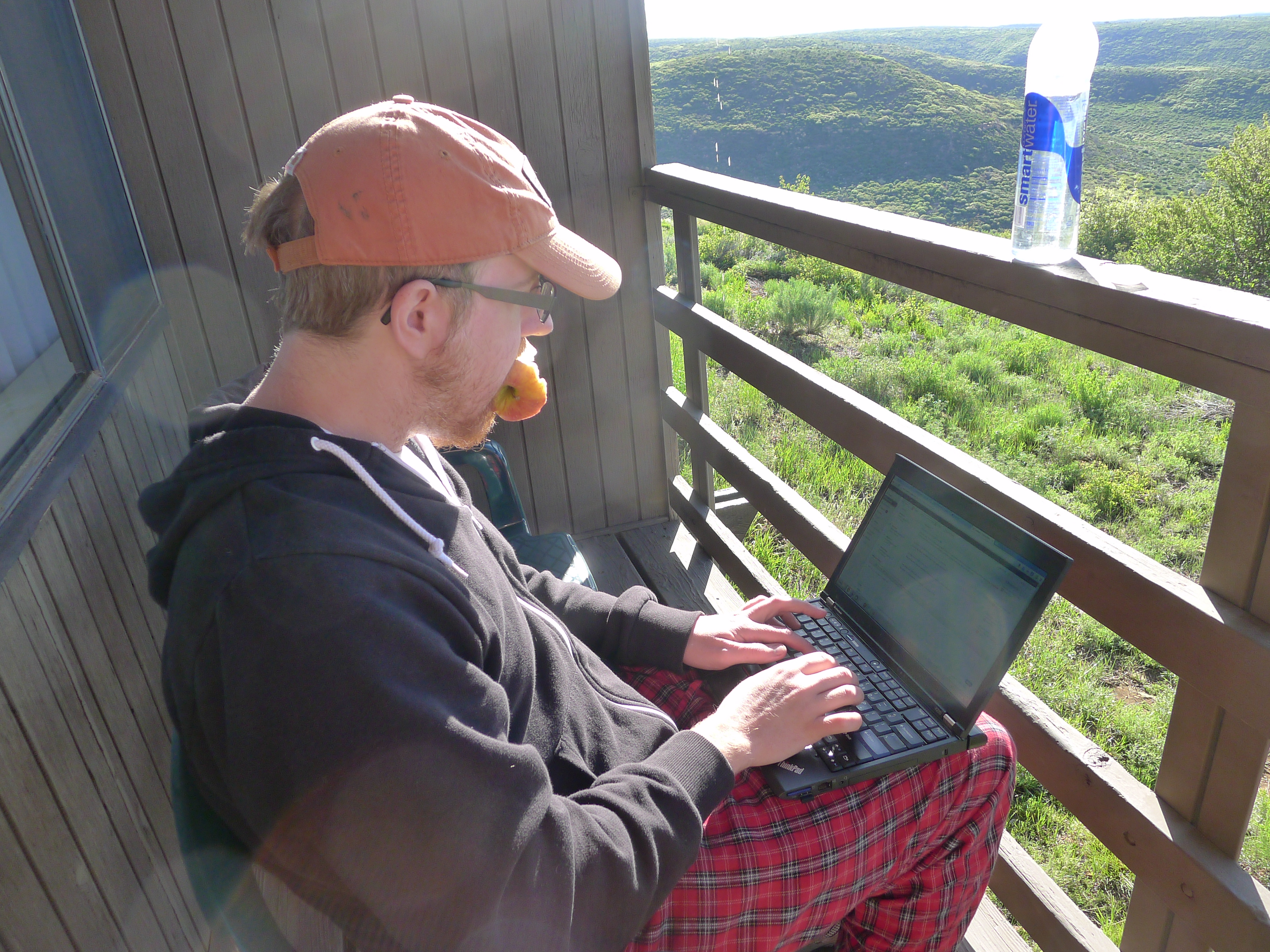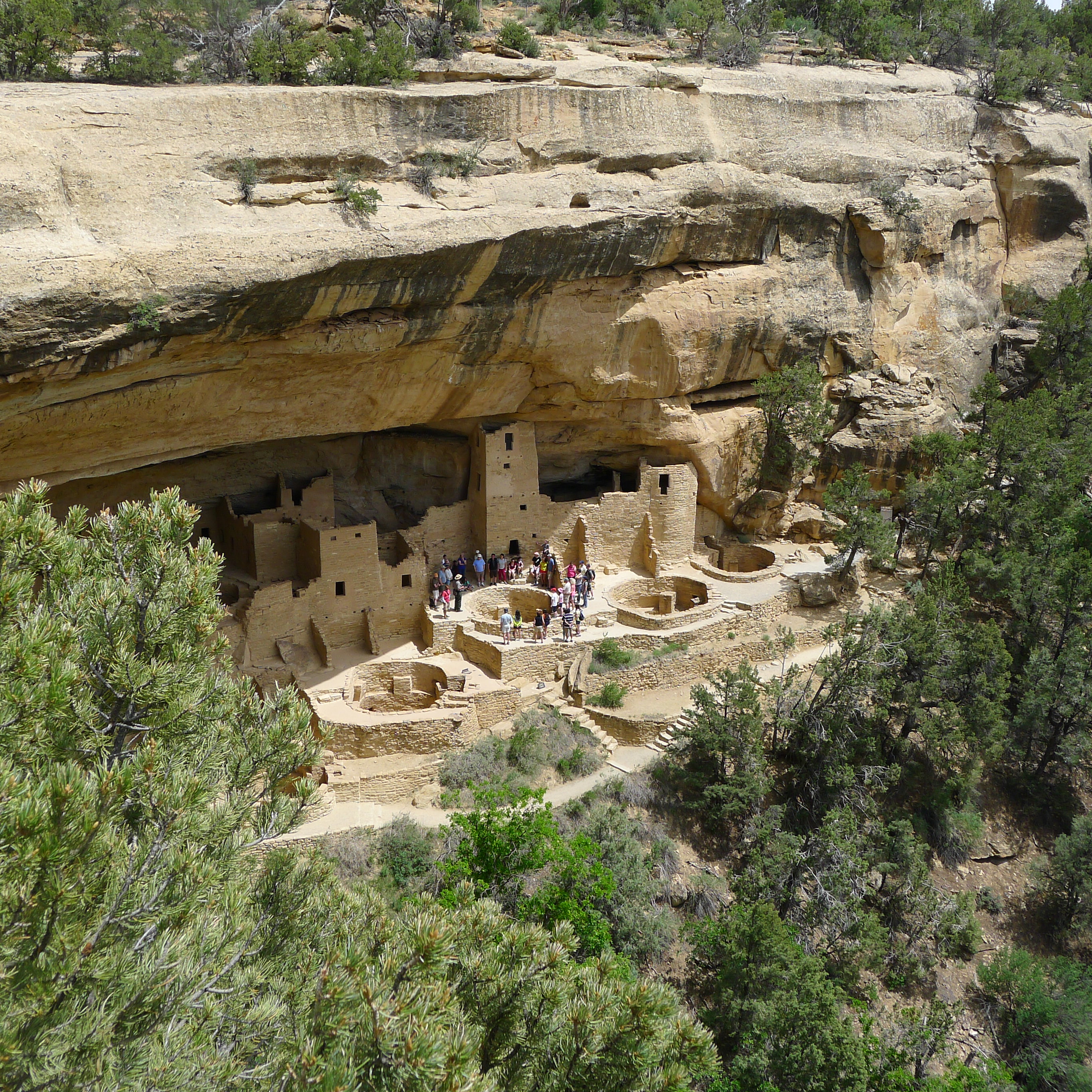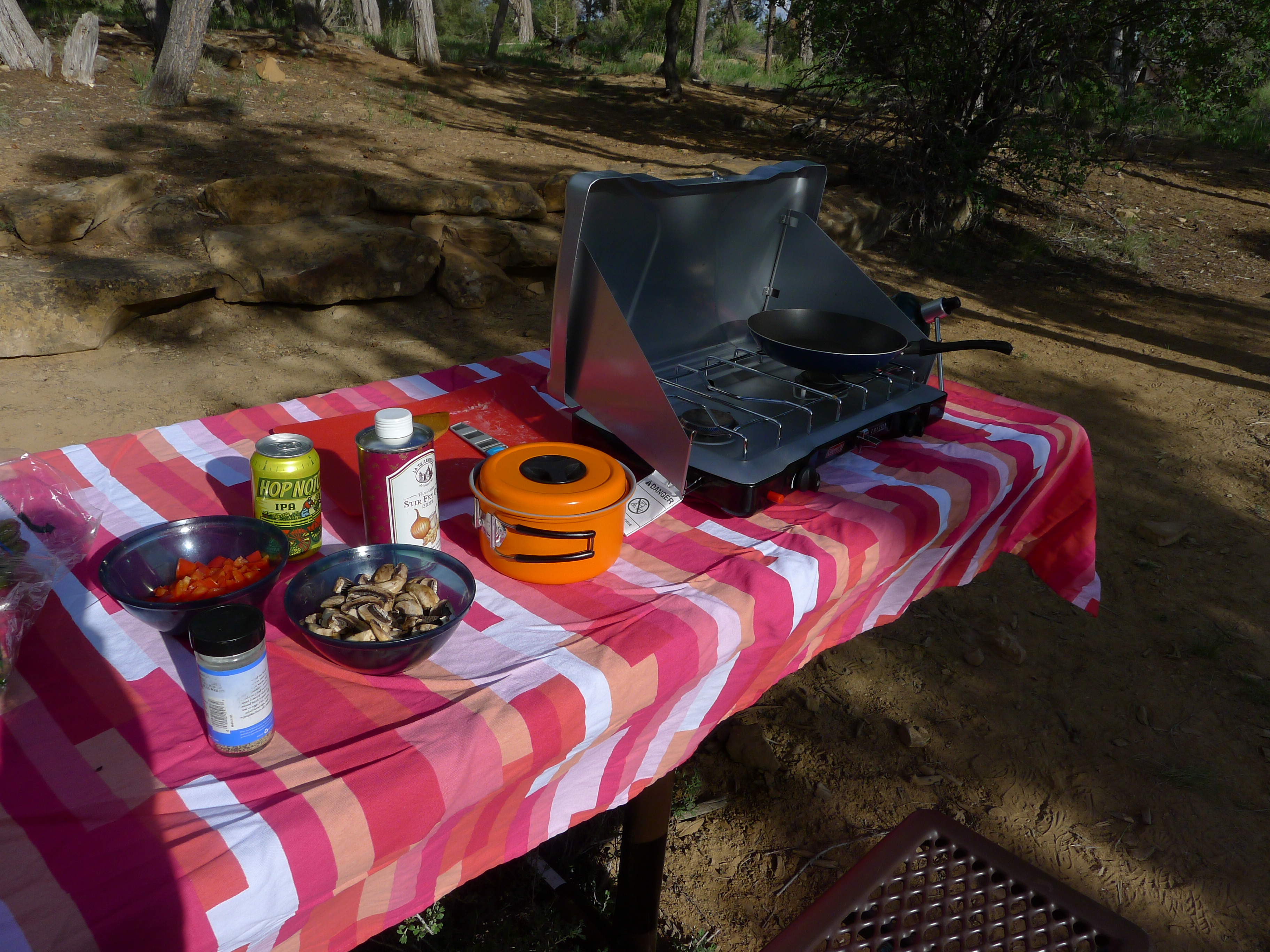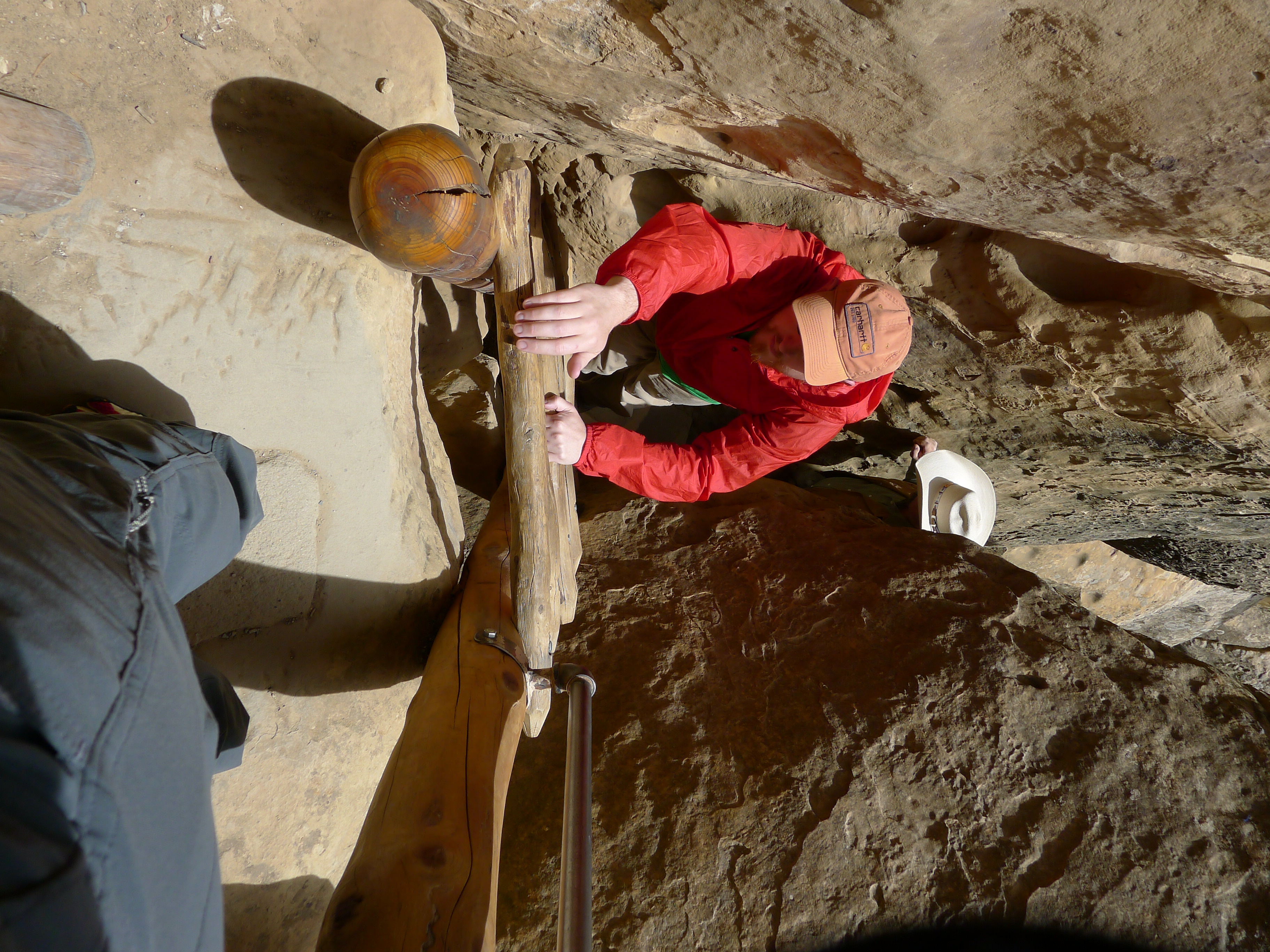My original plan for this point in the trip was to catch a flight to Vegas while Emily continued on alone, stopping at several national parks before reaching Austin. This would have put me in Las Vegas in time for the opening events.
I decided, however, to skip the first few events and accompany Emily to Mesa Verde instead. There were two reasons for this. The first was that it wasn’t going to be cheap or easy to get a flight from anywhere near Durango. Second and more importantly, Mesa Verde is a really freaking cool place. I mean, it’s a 1000+ year-old “lost city” built into the walls of a canyon. Just speaking objectively, that has to be one of the coolest things there is. I’d been there once before, but it was about 20 years ago, and the main thing I remember about it is being upset that there was no television in the lodge.
To be fair, the official lodges in the national parks can be a disappointment to those who don’t know what to expect. Building a hotel inside of a park is no longer consistent with the National Park Service’s philosophy, but they do allow previously existing lodges to continue to operate because they are often part of the history of the place. That means that these hotels are by definition old, and what passed for luxury accommodations fifty to one hundred years ago hasn’t necessarily withstood the test of time. Of course the lodges still tend to be expensive, since unless you want to camp they are the only place to stay inside of the parks, so sometimes people come away thinking, “I paid $300/night for no air conditioning, a creaky room, and a toilet that doesn’t flush properly?”
The lodges are both beautiful and historic, but you don’t have to sleep in them to appreciate that. Our usual MO is to camp but hang out in the lobby of the lodges in the evenings. Once again working her magic, though, Emily found that the lodge at Mesa Verde was running a two-for-one special, and also that the campground was poorly reviewed, so we stayed there both nights that we were in Mesa Verde.
“Maryland?” asked a very friendly woman at front desk. “I don’t imagine you drove all the way out here?”
“We did, actually.”
“How long did that take you?”
“Ten days. We were only averaging four or five hours per day.”
“Wow, that’s great. And you were able to get off of work for that long?”
Which led to me explaining that I was actually headed out west for work, so to speak. Turns out she used to be a dealer but quit when her casino started pooling tips. As a friendly and attractive young woman, she was probably one of the biggest earners in the room, so it’s not inconceivable that a change like that could have resulted in something like a 50% reduction in hourly rate for her. Pretty brutal, especially knowing that that money is going to others who aren’t making as much of an effort to improve the players’ experience.
Having hit it off with her, we were able to get into our room well in advance of the check-in time, so we ate lunch on our tiny balcony and enjoyed the view. Then we went for our first tour, of a “neighborhood” called Cliff Palace. All of the coolest stuff in the park is accessible only via ranger-led tours (which cost a very reasonable $3/person) because people just can’t be trusted around these delicate, irreplaceable structures.
Getting to wander past and occasionally through these old buildings is awesome in the most literal sense of the word, so even though our guide was pretty lackluster, it was an amazing experience. Even when you know better, it’s hard to avoid thinking of people who lived hundreds of years ago as somehow less intelligent than yourself. Of course they were less technologically sophisticated, but that only makes the feats of engineering and resource management that they accomplished all the more impressive.
For me, the most memorable example of this came from a stick jammed into a crack above one of the caves in which a particularly large collection of structures has been built. These caves are formed by sandstone that eroded away over time, eventually causing a portion of the cliff face to tumble into the canyon below and leaving an inviting little alcove where as many as two hundred people may have lived. If that stick ever fell, it would mean that the sandstone overhead was loosening and it was time to abandon the dwelling.
In the evening, we drove to a picnic area not far from the lodge, set up the stove, and made dinner as the sun sunk lower in the sky.
Our guide for the next day’s tour, of an area called Long House, was somewhat better than the last. Her emphasis was on sustainability and what a small amount of water counted as a bonanza for the Ancestral Puebloans who lived at Mesa Verde. The erosion that created these caves was caused by seeping underground springs, so the caves not only made great shelter from the elements (and possibly from other people – opinions seem to be mixed on this point), they also provided easy access to fresh water, not an easy thing to come by in the arid region. By modern standards it would be a feeble amount of water for a single family, but it was enough not just to sustain but to be considered luxurious for dozens of people.
That was a morning tour, so we’d brought sandwiches to eat afterwards. I’d also brought the aeropress,which caused a bit of a stir in the picnic area. A rancher and his family at the next table over started talking about how good it smelled and ribbing me about not bringing enough for everyone.
It’s revealing of more of my own biases that I would have expected a rancher to see this as some sort of new-fangled, possibly effeminate doohicky and that instant coffee or maybe coffee boiled in an iron kettle was good enough for him. In fact the whole family seemed fascinated by the ingenuity of it, and he commented that I “would be the most popular man” on a cattle drive. So that put a pretty big smile on my face.
We took a hike to yet another set of ruins before heading back to the lodge. It’s worth mentioning that although the ruins are the primary reason for the park’s existence, it would be a beautiful place to visit even without them. The geology of the region (which is actually a cuesta and not a mesa, because it slopes on one side) makes for some amazing scenery.
Returning from our second picnic dinner in the park, we got to talking with a midwestern woman in the parking lot of the lodge who commented on our Massachusetts license plate. She, too, had traveled a lot by car and really did seem to be interested in our whole story: where we were headed and why, why we chose to drive, the route that we took and the places we’d stopped, etc. The conversation was cut short by her friend reminding her that, “it [presumably the poorly reviewed restaurant at the lodge] closes at 9”, so she had to scurry.





Horseback riding is a great option to see Mesa Verde.
Wow brings back memories of my Dad taking us on a trip through the USA in the 50’s.
We did hit the Mesa and it was fun when I was 7 years old. We hit 38 states, Canada, and Mexico. We flew from Hawaii to Detroit and my dad bought a brand new 56 Cadillac from the factory and we drove off to see what America was all about. He wanted us to learn how great this country was. And we learned also its downfalls as we drove through Indian Reservations and saw all the poverty. Uplifting on one hand and sad on the other.
I’m so glad you and Emily made that trip, Andrew! I was just talking today about the time we went when you and Mike were boys. The advantage then was being able to crawl in all the small spots and climb the ladders…